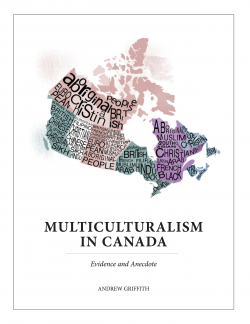Nicolas | Racisme anti-palestinien
2024/05/11 Leave a comment
As mentioned earlier, I think the existing forms of racism, anti-Arab for both Muslim and Christian Palestinians, and anti-Muslim for Muslim Palestinians, cover the essential. The substantive examples raised by Nicolas can be addressed under both:
On apprenait mercredi dans le Toronto Star que la nouvelle version de la Stratégie canadienne de lutte contre le racisme, qui devrait être rendue publique sous peu, n’inclura pas de définition du racisme anti-palestinien.
Cette stratégie, publiée pour la première fois en 2019, « est conçue pour jeter les bases de la lutte contre le racisme systémique par des actions immédiates à l’échelle du gouvernement du Canada ». Plusieurs groupes ont fait pression sur la ministre de la Diversité, de l’Inclusion et des Personnes en situation de handicap, Kamal Khera, pour que le racisme anti-palestinien soit désormais défini et donc reconnu par le gouvernemental fédéral, au même titre que l’islamophobie et l’antisémitisme, le racisme anti-noir ou le racisme anti-asiatique, par exemple. Ça aura été en vain.
Pour l’instant, on continue donc officiellement à dénoncer l’islamophobie, du moins sur papier, laissant de son côté le racisme anti-palestinien se déployer au Canada. Ce n’est pas suffisant. Voici pourquoi.
D’abord, tous les Palestiniens ne sont pas musulmans. De larges pans du mouvement nationaliste palestinien ont toujours cherché à se rassembler autour d’une identité culturelle et d’une situation politique — et non d’une religion. Le keffieh, par exemple, est un symbole à la fois culturel et politique, selon le contexte, mais pas un symbole religieux. Le foulard blanc et noir a pris la signification qu’il a aujourd’hui après avoir été porté durant des décennies par le leader palestinien Yasser Arafat.
Lorsque le parlement provincial ontarien prend la décision de bannir le keffieh de sa chambre législative, comme il l’a fait le mois passé, on empêche l’expression culturelle et politique du peuple palestinien dans son enceinte. Parler vaguement d’« islamophobie », ce serait ici très mal nommer les choses.
En fait, pour bien comprendre le racisme anti-palestinien, il faut savoir qu’il se déploie notamment comme une forme de racisme anti-autochtone. Et ici, je fais très attention à mes mots et aux explications que j’en donne.
Être autochtone est une catégorie politique, et non pas seulement ethnique. Ce n’est pas simplement un terme qui réfère à « qui était là avant ». Il est important de le comprendre si on veut éviter de remonter aux temps bibliques. Le mot « autochtone », dans nos instances internationales, réfère notamment à une catégorie de personnes qui se retrouvent sans État qui parle en leur nom dans le système des Nations unies, parce qu’un État s’est construit « par-dessus » leur territoire ancestral, en quelque sorte. Si le mot référait seulement à de vieilles racines dans une terre, tous les Français chez qui on décèle une forme d’ADN gaulois pourraient participer au Forum des peuples autochtones des Nations unies, pour donner un exemple grossier. Le terme « autochtone » prend une grande partie de son sens à l’intersection de l’« ancienneté » et de la dépossession. C’est en ce sens que je m’exprime.
Lorsqu’un État assied sa souveraineté sur un territoire en dépossédant un autre peuple de ce même territoire, il doit déployer un récit national et un appareil idéologique qui normalise cette dépossession. L’âge d’or du colonialisme correspond avec l’invention de l’idée de terra nullius, par exemple, qui veut que lorsqu’un territoire n’est pas occupé — et par occupé, on veut dire occupé à l’européenne, sujet à des activités économiques « productives » dans une perspective européenne —, il est considéré comme vacant et donc disponible pour la prise de possession coloniale.
C’est aussi en pleine expansion coloniale que Friedrich Hegel et plusieurs autres penseurs européens ont développé leurs idées sur la téléologie de l’Histoire. D’abord, on a tracé une ligne arbitraire entre la « préhistoire » et l’« Histoire », puis on a posé l’État-nation comme l’aboutissement de l’« Histoire » et ainsi hiérarchisé les peuples selon leur « stade de développement ». On a, en quelque sorte, inventé la catégorie de « primitif » — une autre manière de naturaliser qui a le droit d’exercer sa souveraineté sur des terres, et qui peut en être légitimement dépossédé.
Ces idées continuent d’être mobilisées jusqu’à aujourd’hui un peu partout en Occident. Elles permettent notamment à certaines voix pro-israéliennes plus radicales de nier jusqu’à l’existence même de la Palestine, puisque le peuple palestinien ne disposait pas d’un État-nation indépendant avant la fondation d’Israël.
Ces notions nous permettent aussi de mieux comprendre, par exemple, les commentaires de Selina Robinson, qui était ministre de l’Éducation postsecondaire en Colombie-Britannique, lorsqu’elle a affirmé, en janvier, que la Palestine était un « morceau de terre merdique » (crappy piece of land) sur lequel « il n’y avait rien » avant la fondation d’Israël. Ses propos n’étaient pas « islamophobes ». Ils étaient un parfait exemple du racisme anti-palestinien ordinaire, appuyés sur une forme d’actualisation de la doctrine de la terra nullius. Finalement, Selina Robinson s’est excusée, a perdu son poste de ministre, puis a quitté le caucus du Nouveau Parti démocratique provincial.
Le maire de Hampstead, Jeremy Levi, nous a offert un autre exemple de dérapage anti-palestinien. La semaine dernière, il a encore déclaré sur X que le gouvernement canadien devrait « reconsidérer son plan d’immigration pour les Gazaouis », puisque « leurs valeurs semblent incompatibles avec les nôtres ». Il faut savoir que l’idée des « valeurs incompatibles » a été mobilisée durant l’histoire coloniale pour justifier le statut subalterne, « non intégrable » de certaines populations. Le discours est encore souvent employé à l’égard des Palestiniens, notamment dans les espaces médiatiques israélien et américain, pour justifier certaines inégalités ou violences structurelles.
La liste d’exemples pourrait être encore longue. Pour repérer le racisme anti-palestinien dans l’espace public, encore faut-il le comprendre. Pour le comprendre, il faut d’abord le nommer clairement.
